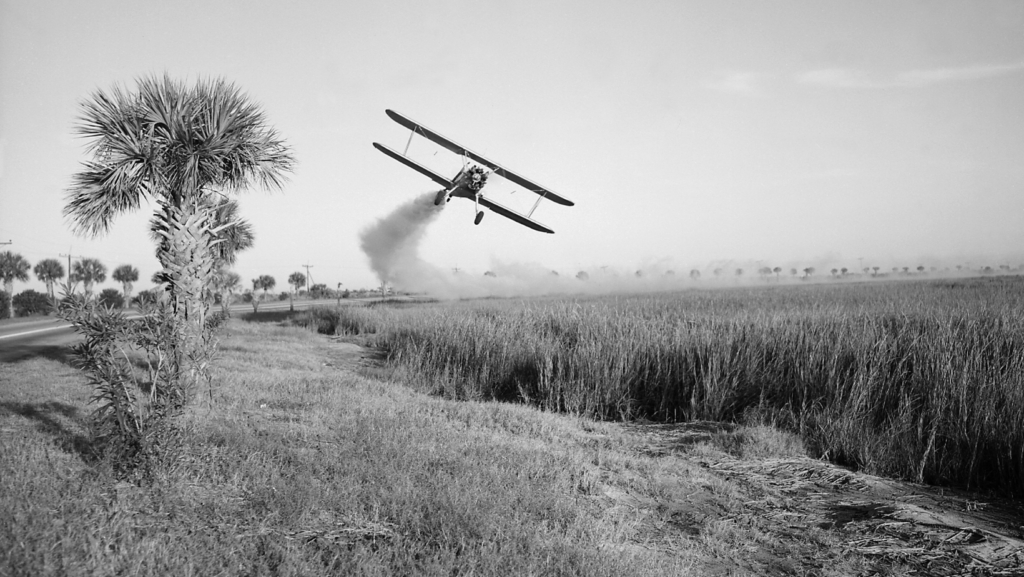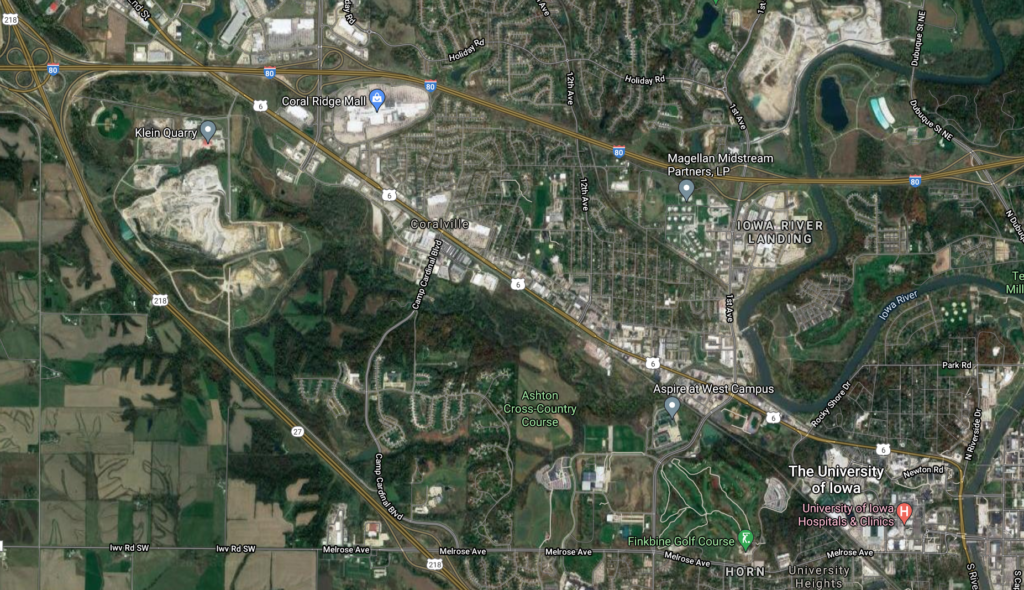Silent Spring, Returning

A bi-plane is spraying DDT insecticide during malaria control operations in Savannah, Georgia, 1950, The Everett Collection.
Dichlorodiphenyltrichloroethane, most commonly known as DDT, became manufacturable in commercial quantities during WWII and quickly became the military insecticide of choice for everything from mosquitoes to bedbugs. It went public immediately following the war, leaving ecological destruction nationwide.
When I was a child, an extensive vegetable farm ran behind our street and in 1946 or 1947, it was massively sprayed with DDT, which an advertising program had proclaimed to be perfectly safe, with the sing-along slogan that “DDT is good for me.” However, within a week, all the neighborhood cats were dying and little dead birds seemed all too common.
To a nation just beginning to recover from a world war, this seemed to be a trivial problem, even through it was reenacted everywhere across the country. But over a couple of decades, it began to be taken more seriously, especially when some insects began to develop a resistance to it. One farmer in Florida reported that he was spraying his sweet corn fields twice a day with DDT in order to have earworm-free produce to sell in Miami. Rachael Carson’s book, Silent Spring in 1962, increased public awareness and the turning point seemed to come from the recognition that eggshell thinning was causing nesting failures of iconic birds like eagles. DDT and a group of related chlorinated insecticides were finally banned in 1972.
There was no going back to the old heavy metal insecticides because there were gardens and farm fields adjacent to European cities in which the soil was so poisoned with arsenic and lead that many crops wouldn’t grow, and those that did were too toxic to consume. For a few years, organophosphate and carbamate insecticides replaced the banned chlorinated insecticides, but these were still rather general-purpose poisons with rather strong effects on mammals.
In the early 1970s, research also shifted back to that old natural insecticide – nicotine. Being a natural product, it could not be patented, so the research focused on synthetic molecules very similar to nicotine which were similarly fatal to insects. The first was patented in 1985. More variations on nicotine were patented in subsequent years and the family of synthetics became known as the neonicotinoids – “neo” means new, and “oid” means similar to. The members of this family have gained approval and registration with authorities for several reasons, especially because they affect mammals less than insects, and they kill many insect species at very low concentrations, in the parts-per-billion range. Most of the neonicotinoids are also systemics and if seed is coated with them before planting, the entire plant which grows from the seed is also toxic, mimicking the tobacco plant that it is modeled after.
Today, neonicotinoids dominate the insecticide market worldwide and are especially favored by industrial agriculture where they can be applied over large areas by aircraft. The mist also drifts for great distances in the slightest breeze. Consequently, there are not a lot of places in Iowa that don’t at least occasionally get an unsolicited application. And this is the problem for conservation. Pollinators are mostly insect species. Assorted bee and butterfly species do much of the work, and as you already know, these have been in trouble for at least a decade. Amongst domestic honey bees, excessive death in the hive is labeled colony collapse disorder. And while adult birds are not noticeably affected by an occasional contact with neonicotiniods, their chicks rely heavily upon insects for high-protein food.
One study of a chickadee nest revealed the parents making about 9,000 feeding trips before the young fledged, and the provender was mostly insects, particularly caterpillars. And amongst the ground-birds like quail and turkey, the precocious chicks scurry about hunting insects dawn to dusk. Successful neonicotinoid applications do not kill young birds so much by poisoning them, rather they die from starvation. So the loss of birds due to spraying insecticides today is not as immediate and dramatic as it was in the DDT era, rather subsequent generations of many species just diminish and fade away, and spring gradually becomes more silent.
The Clear Creek Trail corridor is a good example of a habitat system providing some separation distance from industrial agriculture. On the east end it is buffered by the Iowa River, the University of Iowa and commercial Coralville, while on the west end the buffer includes suburbia, the Kline Quarry complex, the ball fields and the Interstate 80-380 interchange.
In general, because of insecticide and herbicide drift, large conservation areas tend to be worth more as diverse native flora and fauna habitat compared to similar acreages in small and scattered parcels. Birds can also benefit from unsprayed buffers which might otherwise have little conservation value in themselves.




